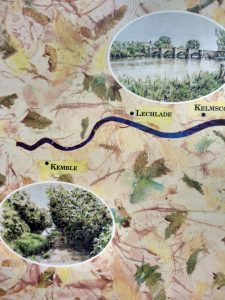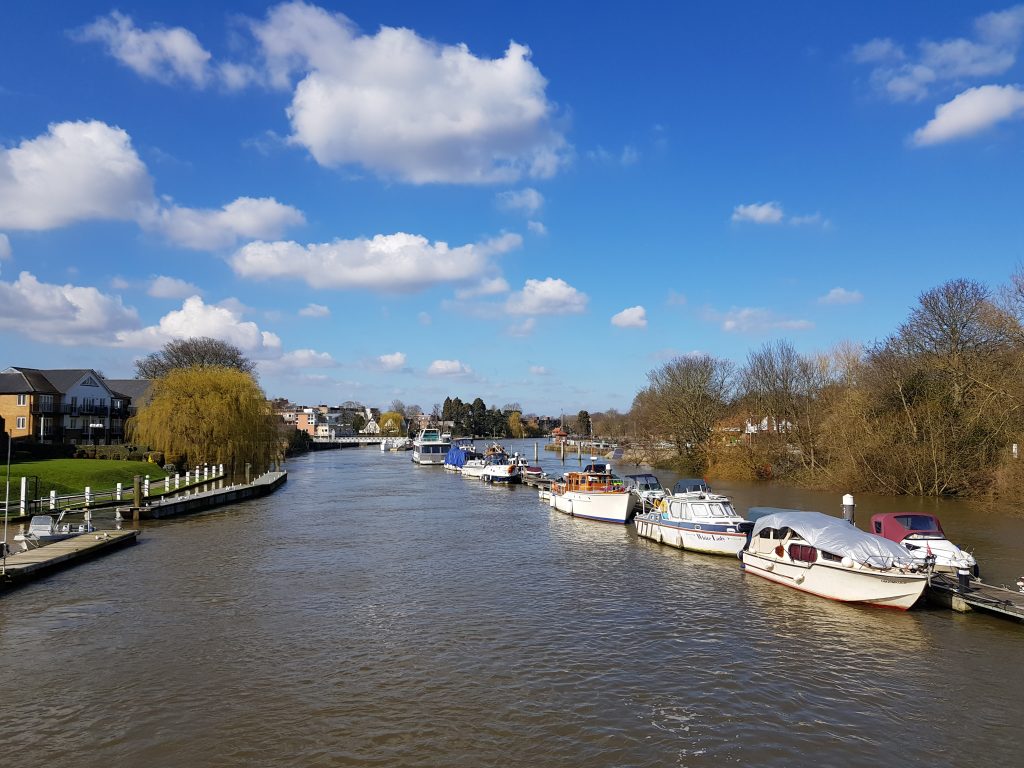“At one end of the Thames you may picnic over the river on ancient farm bridges garlanded with stonecrop, and watch aerial warfare between monstrous dragonflies; at the other end is the Thames Barrier, reposing in the departing flow like a shining line of walnut shells.” – A Walk Along the Thames Path (Michael Joseph, 1990).
The Thames Path Is twenty five years old this year. I walked the river in the late 1980s for my book, not very originally titled A Walk Along the Thames Path (Michael Joseph). Amazon, with access to most things in the world, and who still have copies, describe it thus: “An account of the author’s walk along the entire length of the Thames, from its source to the Thames barrier, taking in places of interest along the way. Written in an anecdotal, discursive manner, and filled with the characters he meets along the route.”
In my introduction I saw the river as “carving a silvery dividing line across southern England. It percolates through English literature – many Dickens novels contain a Thames scene. It laps around the foundations of distinguished addresses. It is the site of epic sporting encounters, the inspiration of artists, the route followed by monarchs in gilded barges. It is also a very efficient drain.
“It is foreground to the ‘Mother of Parliaments’ at Westminster, and backdrop to the world’s model for the botanical garden at Kew. Alone of England’s rivers, it has its own police force.
“At one end of the Thames you may picnic over the river on ancient farm bridges garlanded with stonecrop, and watch aerial warfare between monstrous dragonflies; at the other end is the Thames Barrier, reposing in the departing flow like a shining line of walnut shells.”

Upper reaches of the Thames, from dust jacket of “A Walk along the Thames Path”.
(Gareth Huw Davies, Michael Joseph.)
This is everyman’s National Trail, to be walked in its entirety in two to three weeks and divisible into an infinite number of small, strollable sections, which are even easier to reach because of the abundant public transport in the river’s later stages.
The river itself doesn’t change very much, but its bank-side environment is constantly being updated.Tony Robinson starts his walk at the official source in Gloucestershire, (my account of walking the opening miles, using only public transport to get there ) and takes in features such as Cliveden House, Battersea Power Station and the London Gateway, a container port on the lower reaches.
I suspect there will be books and articles to be written and TV programmes, or whatever replaces them in the far future, to be made on the Thames for centuries to come.
My book, published by Michael Joseph, is out of print. However some libraries still hold it.
—–
Some other articles of mine on the Thames.
Thought for the Day features the Thames Path
Release your inner Olympian. Take the Thames Path challenge
Appeal launched to buy vital piece of River Thames wildlife jigsaw

